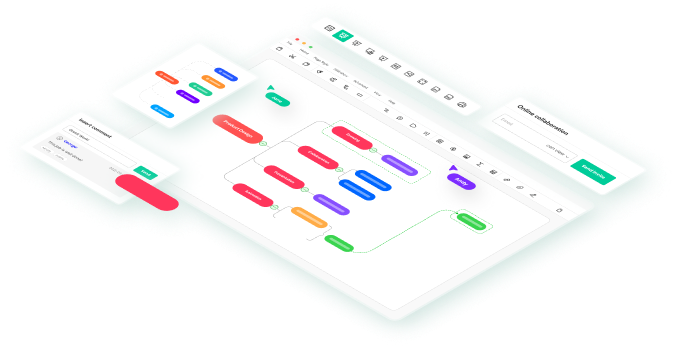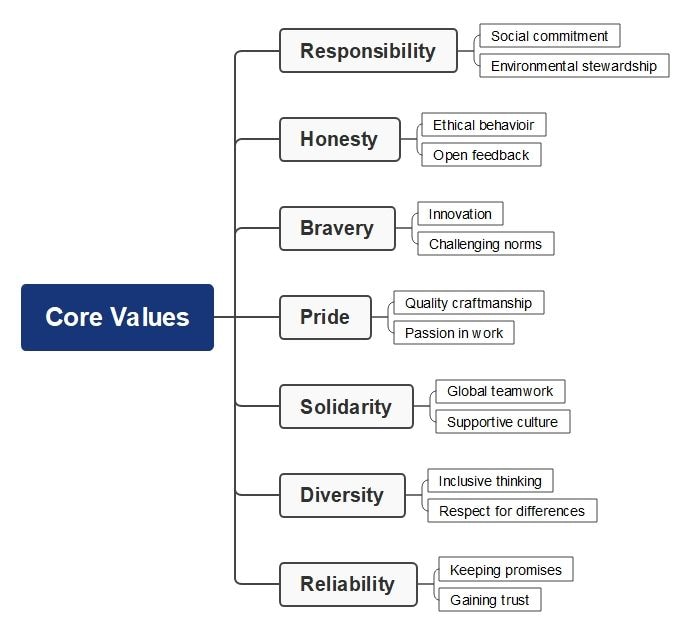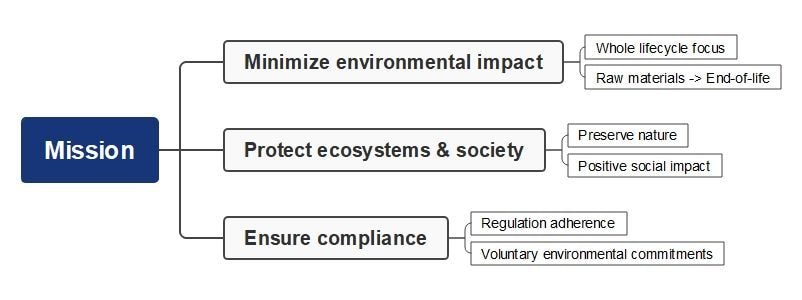Volkswagen is a leading global carmaker that shapes mobility with bold goals. Analyzing its mission and vision reveals strategies, values, and insights that matter for businesses, sustainability, and the future of transportation.
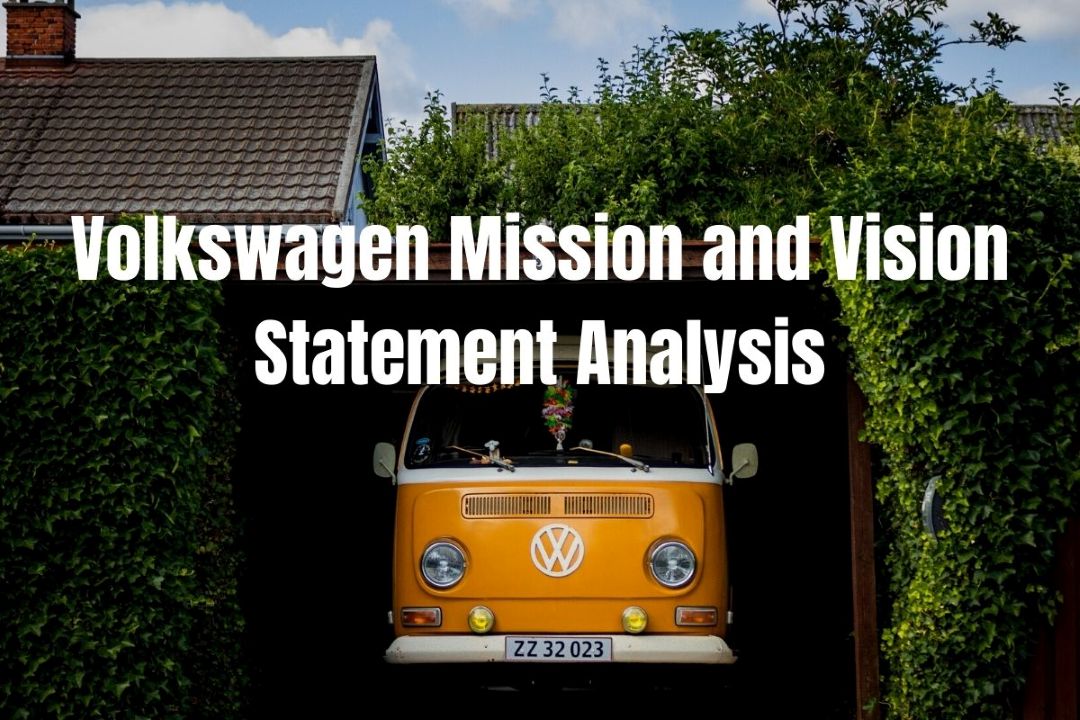
In this article
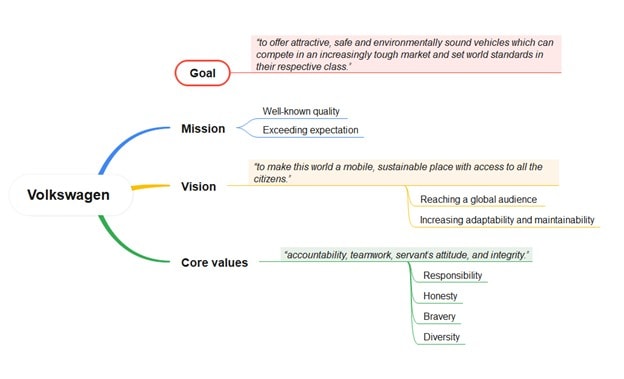
Overview of Volkswagen
Volkswagen is a global carmaker that offers a wide range of vehicles from compact hatchbacks to electric vehicles (EVs). In 2024, it earned about $357 billion in revenue, making it one of the world’s top automakers.
Volkswagen’s clear mission and forward-looking vision help guide its innovation, restructuring, and EV shift. That strong purpose supports resilience, competitive edge, and industry leadership—even amid tariff pressures and market shifts.
This article will carefully examine Volkswagen’s mission and vision statements to explain how they shape its strategy, influence its success, and point toward its future in a changing auto industry.
Here’s a quick overview of the company:
| Aspect | Information |
| Founded | 1937 (originally “Gesellschaft zur Vorbereitung des Deutschen Volkswagens mbH”) |
| Headquarters | Wolfsburg, Germany |
| CEO | Oliver Blume |
| Annual Revenue (2025) | $357.48 billion USD |
| Market Cap | $60.57 billion USD |
| Industry classification | Automotive |
| Latest Growth | 3%(Q1 2025) |
| Official Website | volkswagen-group.com |
Volkswagen’s Core Values
Volkswagen’s core values—Responsibility, Honesty, Bravery, Diversity, Pride, Solidarity, Reliability—form the heart of its culture. They guide every team member’s work, help the company innovate, stay truthful, proud, inclusive, united, dependable, and conscious of its social and environmental role.
Volkswagen’s Mission Statement
Volkswagen’s goTOzero mission focuses on reducing environmental impact across the product lifecycle. It emphasizes eco-friendly production, resource efficiency, and compliance, aiming to safeguard ecosystems while creating positive social value through responsible mobility solutions.
Volkswagen’s mission statement is specific and actionable. It highlights lifecycle accountability, global sustainability alignment, and a measurable framework. By linking business goals to environmental responsibility, Volkswagen positions itself as a leader in green mobility and sustainable innovation.
The mission’s scope is limited to environmental themes, leaving out customer focus, innovation, and financial goals. Its technical tone lacks emotional appeal, reducing inspiration for employees and customers compared to broader, people-centered mission statements from other automakers.
To improve this:
- Expand mission to include customer and social well-being.
- Add inspiring language about the future of mobility.
- Set clear, measurable targets for emissions and EV adoption.
Volkswagen’s Vision Statement
Volkswagen pursues two core visions: “Shaping mobility – for generations to come”, emphasizing sustainable, connected, and emotive mobility; and “Mobility for Generations – The Global Automotive Tech Driver”, focusing on leading industry transformation through tech and digital leadership.
Both visions are inspiring and forward-looking. They balance emotional appeal with tech ambition. They commit to sustainability, digital leadership, and long-term relevance, positioning Volkswagen as both a guardian of legacy and a driver of future innovation.
The strategic visions, however, lack specific targets, reach, or timelines. They may feel vague to stakeholders wanting clarity on action plans, progress, or tangible impact. This could weaken internal alignment and external credibility.
To improve this:
- Add measurable goals, like EV, autonomy, software share, or carbon targets by specific dates.
- Clarify timelines (e.g., by 2030 or 2035) to showcase ambition and accountability.
- Include stakeholder benefits, emphasizing how customers, communities, and employees will benefit from the company’s transformation.
How To Create a Company Statement Analysis
Breaking down vision and mission statements is essential because it reveals hidden priorities, strategies, and values. For Volkswagen, this helps uncover how sustainability, innovation, and technology drive its goals, providing clarity for businesses, investors, and industry observers.
Mind maps make analysis easier by showing connections between goals, values, and strategies in one clear view. For Volkswagen’s mission and vision, mind maps highlight strengths, gaps, and opportunities, making complex strategies simple and more understandable.
Tools like EdrawMind help create professional mind maps quickly. Users can organize thoughts, connect ideas visually, and analyze Volkswagen’s mission and vision with ease. Trying these tools makes strategic analysis more engaging, accurate, and insightful.
Use a Professional Analysis Mind Map Maker
Fortunately, you don’t need to draw shapes by hand to make an analysis mind map. Wondershare EdrawMind can handle that work for you, saving time and effort.
With AI support, icons, and ready-made templates, EdrawMind helps you design polished, professional company statement analyses quickly and easily.
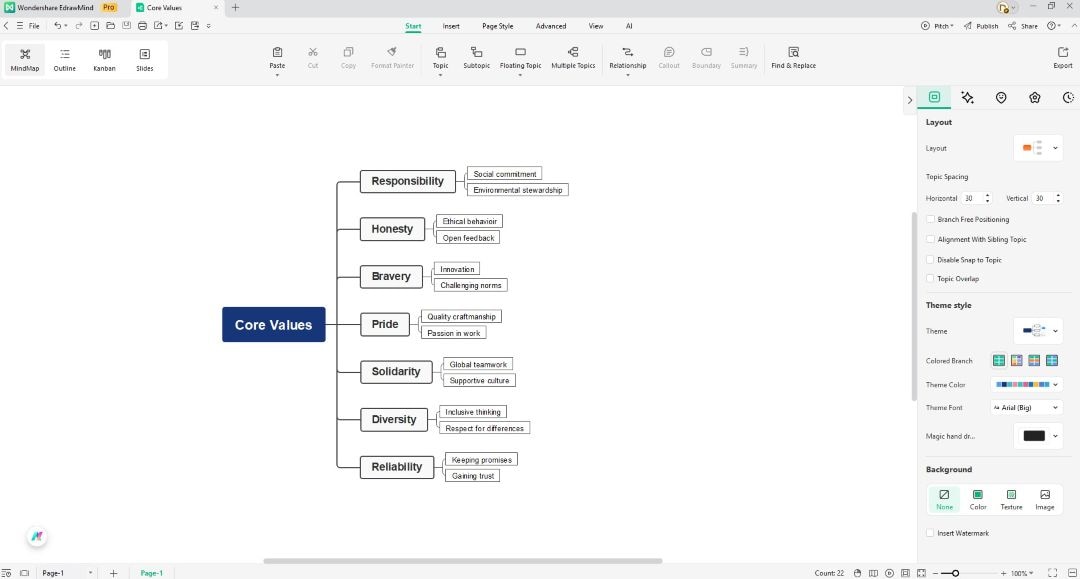
Steps To Make an Analysis Mind Map
To create an analysis mind map, follow these simple steps:
Step 1
Click Create > Blank Mind Map to create a mind map.
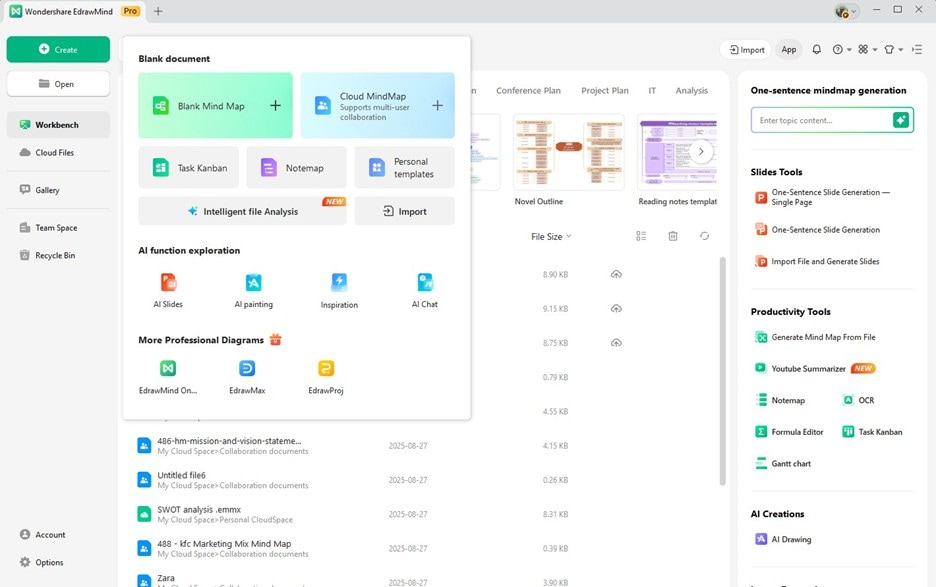
Step 2
Then, edit the Main Idea to specify the aspect that you want to analyze. For example, you can use “Core Values.”
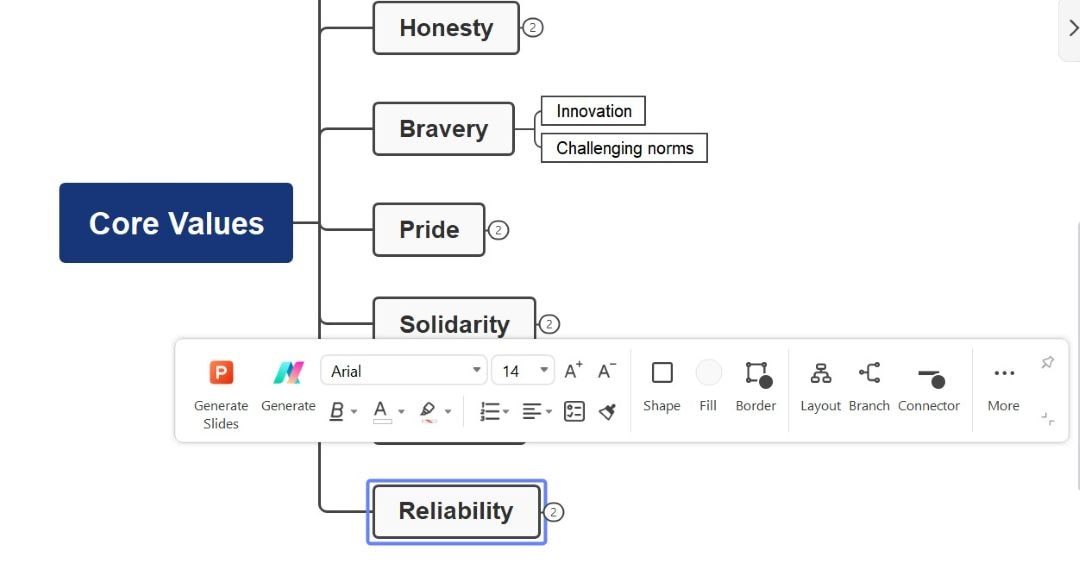
Step 3
Add the main branches to show the main segments of the analysis. To add more main branches, press the Enter key. You can also add subtopics to expand on the idea by pressing the Tab key.

Step 4
Change the theme or layout, or add images or icons to improve your diagram's visual appeal and add more information.
Step 5
Export and share with your friends via PDF, JPG, or other file formats supported by EdrawMind.
Tips When Making an Analysis Mind Map
- Start with the core idea – Place the mission or vision statement in the middle, then branch into themes like leadership, innovation, or impact.
- Keep it structured – Use hierarchy and short keywords to make branches clear and easy to follow.
- Make it visual – Add icons, colors, or highlights to emphasize categories and show relationships more clearly.
- Use digital tools – Platforms like EdrawMind provide templates, AI features, and collaboration options to create professional mission and vision analysis mind maps.
FAQ
-
1. Who is the target market of Volkswagen?
Volkswagen mainly targets middle-class customers who want reliable, stylish, and affordable cars. Its market includes families, young professionals, and eco-conscious drivers looking for EVs that balance quality, safety, and innovative technology. -
2. What are the most common products of Volkswagen?
Volkswagen’s most popular car models include the Golf, Polo, Passat, Jetta, Tiguan, and the all-electric ID.4. These models are known worldwide for their strong performance, safety features, and modern design. -
3. Who are Volkswagen’s main competitors?



